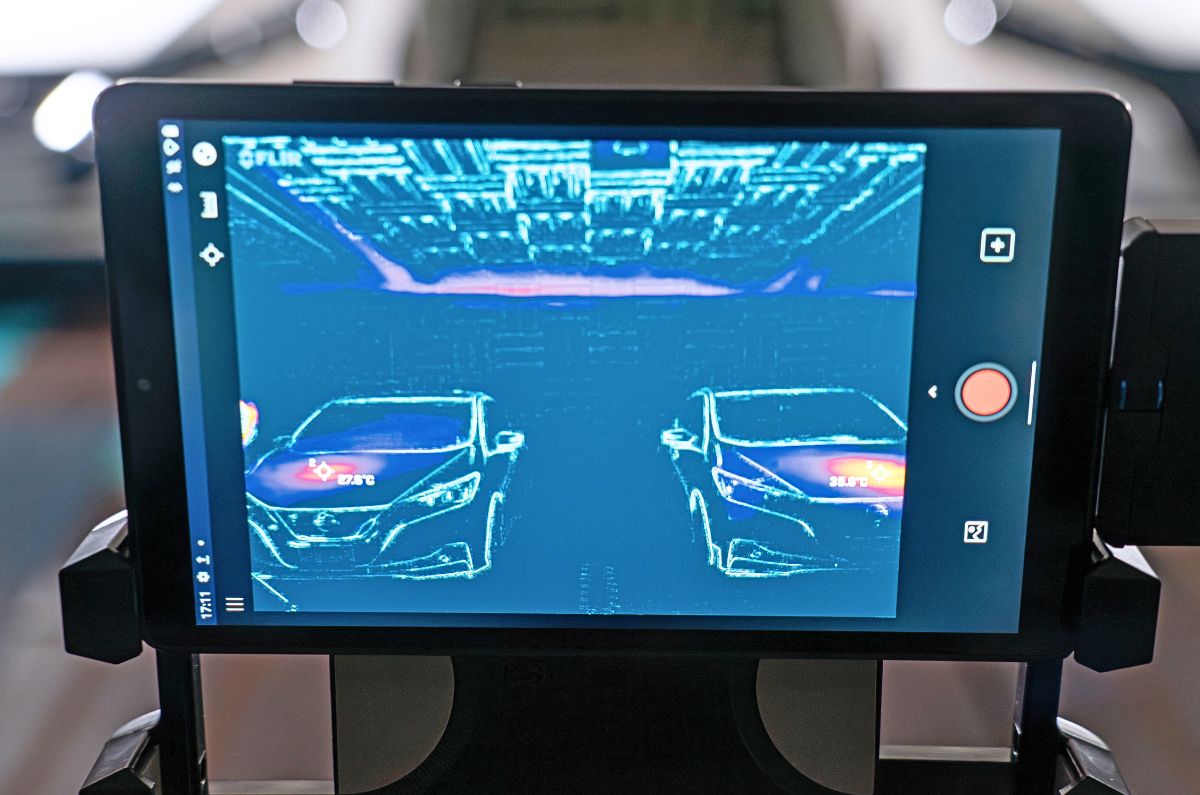Keeping a car cooler means less energy is used by the air-conditioning system.
The best way to extend range or cover the same distance for less cost is to waste less energy doing it. Since EVs really began to take off a decade or so ago, the engineers developing them have scrutinised every fraction of a watt the car consumes across its entire electrical architecture. The same applies to ICE cars because reducing the amount of energy affects how much fuel gets burned.
Nissan has found another tweak for improving a car’s efficiency in the form of a sophisticated heat-reflective technology it calls ‘cool paint’. In trials, the paint has reduced the temperature of the exterior surface by 12 degrees C, leading to a corresponding reduction of 5 degrees C in cabin temperature compared to traditional paint.
Temperature plays a big part in a car’s efficiency beyond an engine’s or battery’s operating temperature. Heating or cooling the cabin with air-con has become a metaphorical and literal hot topic with EVs because of its noticeable effect on the range. Drivers in hot climates have long been aware of how fuel consumption can increase if the air-con is used continually (especially in small-engined cars), but the impact on an EV’s range has focused the attention more.
Apart from ambient air temperature, direct sunlight is responsible for a good chunk of cabin heat. Manufacturers already use infrared-reflecting (IR-reflective) windscreens to complement the natural property glass has of filtering ultraviolet rays. Nissan’s cool paint has been under development since 2021 and is based on metamaterial, which it describes as ‘synthetic composite’ materials with structures not usually found in nature.
Those structures, rather than the substances from which metamaterials are made, have repeating patterns and are tiny enough to filter out the wavelengths designers want to be rid of. In this case, it’s near-infrared, which is the infrared wavelength closest to light detectable by the human eye. The metamaterial consists of two microstructure particles that react to light. One of them reflects the near-infrared light that would normally cause molecular vibration in a traditional paint’s resin and generate heat. The second creates electromagnetic waves that redirect the sun’s energy away from the surface and into the atmosphere.
The idea itself isn’t new: heat-reflective paint has been used on buildings, for instance, but Nissan says it’s thick and can only be applied using a roller, and it has a powdery surface finish. Developing a high-quality automotive-grade paint that has similar properties and can take a clear top coat and be applied in a spray shop has been a tougher proposition. Nissan has tested over 100 samples and confirmed it’s resistant to salt, stone chips, peeling, scratches and chemicals. It also has good colour consistency and can be repaired like conventional paints.
Testing is ongoing, but Nissan expects the paint to one day be available in a range of colours and for special orders.
Also see:
Tech talk: how software is replacing purely mechanical systems in cars
























